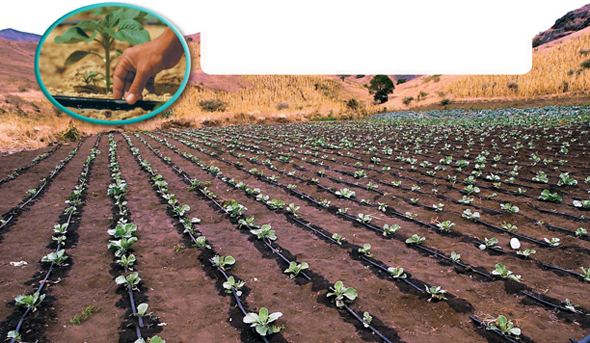▸ Residential Sewage Have you ever stopped to think what happens after you flush your toilet? Those wastes don't disappear! They become residential sewage. Sewage isn't poisonous, but it does contain lots of nitrogen and phosphorus. Reasonable amounts of these nutrients can be processed by and absorbed into healthy ecosystems. But large amounts of sewage can stimulate blooms of bacteria and algae that rob water of oxygen. Oxygen-poor areas called “dead zones” can appear in both fresh and salt water. Raw sewage also contains microorganisms that can spread disease.
Water Quality and Sustainability One key to sustainable water use is to protect the natural systems involved in the water cycle. For example, as water flows slowly through a wetland, densely growing plants absorb some excess nutrients and filter out certain pollutants. Similarly, forests and other vegetation help purify water that seeps into the ground or runs off into rivers and lakes. Protecting these ecosystems is a critical part of watershed conservation. A watershed includes all the land whose groundwater, streams, and rivers drain into the same place—such as a large lake or river. The idea behind watershed conservation is simple: Cleaning up the pollution in a local area can't do much good if the water running into it is polluted. You must consider the entire watershed to achieve long-lasting results.
Pollution control can have direct and positive effects on the water quality in a watershed. Sewage treatment can lower levels of sewage-associated bacteria and help prevent dead zones in bodies of water receiving the runoff. In some situations, agriculture can use integrated pest management (IPM) instead of pesticides. IPM techniques include biological control—using predators and parasites to regulate for pest insects—the use of less-poisonous sprays, and crop rotation.
Conserving water is, of course, also important. One example of water conservation in agriculture is drip irrigation, shown in Figure 6–9, which delivers water drop by drop directly to the roots of plants that need it.

FIGURE 6–9 Drip Irrigation These cabbages are supplied water directly to their roots through drip irrigation. Tiny holes in water hoses (inset) allow farmers to deliver water only where it's needed.
BUILD Vocabulary
RELATED WORD FORMS The verb purify is related to the noun pure. To purify means “to make pure or clean.” Wetlands purify water by removing pollutants.
Table of Contents
- Formulas and Equations
- Applying Formulas and Equations
- Mean, Median, and Mode
- Estimation
- Using Measurements in Calculations
- Effects of Measurement Errors
- Accuracy
- Precision
- Comparing Accuracy and Precision
- Significant Figures
- Calculating With Significant Figures
- Scientific Notation
- Calculating With Scientific Notation
- Dimensional Analysis
- Applying Dimensional Analysis




